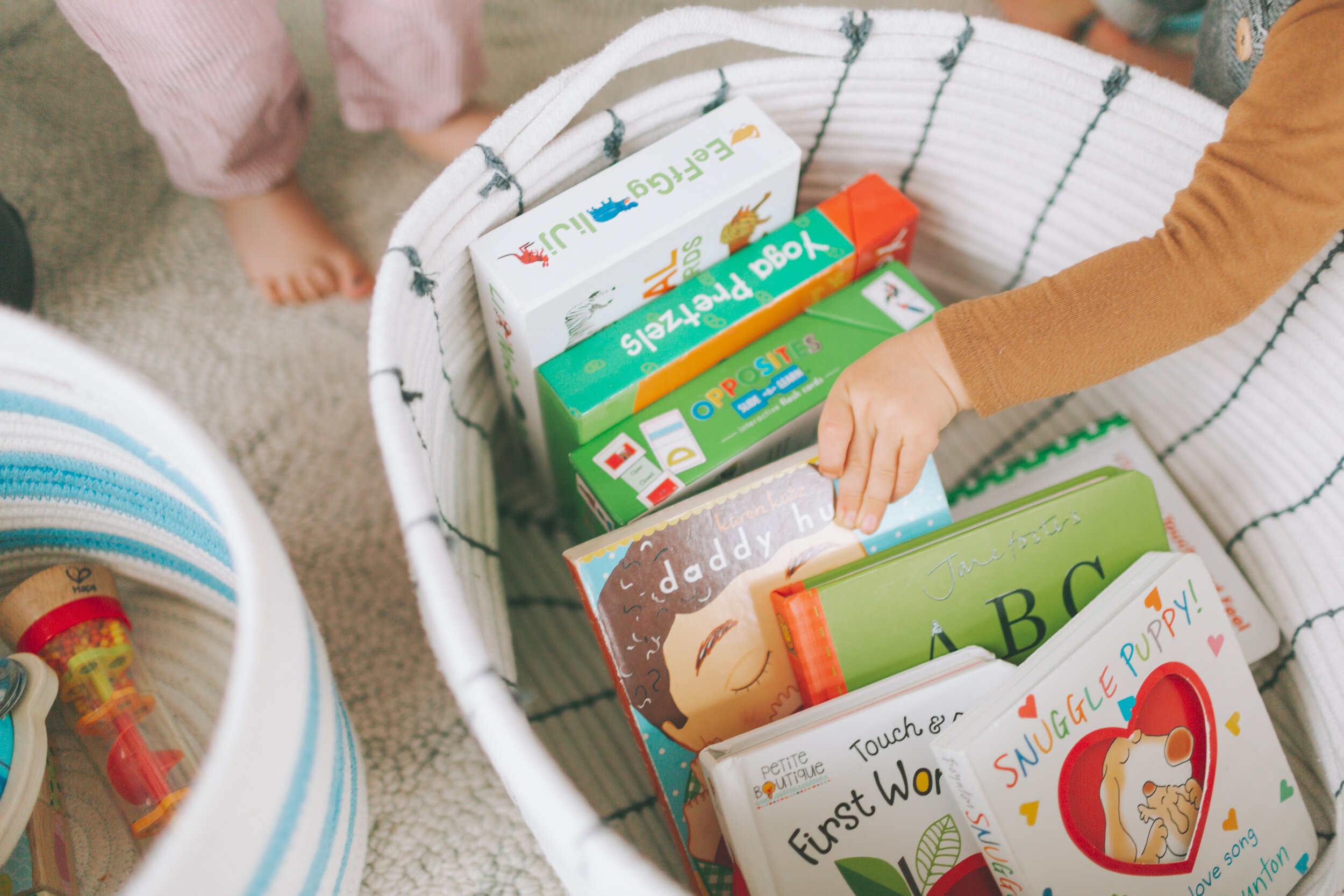How Reading & Books Teach Babies To Talk
Reading with your baby will benefit them into toddlerhood, through elementary school, and beyond. And, it’s never too early to start! Keep reading to learn how reading helps support your baby with learning to talk, which books are best for supporting language development, and how to go about reading with a wiggly babe on your lap!
5 Ways Reading Supports Language Development
It might seem odd or silly to read to your baby when they aren’t yet able to understand or follow along. We get that! But we promise it’s worth it, because reading to babies before they understand teaches them key communication skills that will help them learn to talk.
Here are 5 ways reading supports language and literacy skills:
#1 Supports Brain Development
When it comes to development, infancy is an incredible and critical period of time. From birth to three years, your child’s brain is growing more rapidly than ever! And your input (think reading, talking, singing, and playing together) is invaluable.
#2 Set Your Child Up For Success At School
Reading sets the stage for your child to have a stronger vocabulary AND better language skills down the road! (How cool is that?!)
Research has shown that children who were read to during infancy have higher language and vocabulary skills later in life, when they head off to elementary school. We also know that the number of words a baby hears during their first year of life is really important. Having strong language skills will have a positive impact on all areas of their life, including academics.
#3 Connect & Bond
Reading is an easy way to connect and bond with your baby. (Even if right now, reading looks like you narrating while your baby gnaws on the cardboard pages!) Making a reading ritual part of your day helps build a sense of predictability and routine that young children thrive on.
#4 Build Social, Emotional & Early Literacy Skills
Reading supports development overall. It’s not just about teaching children new words and sounds! It helps our littles with listening skills, cognitive abilities, and social-emotional skills.
#5 Foster A Lifelong Love Of Reading
Sitting down, reading, and connecting together gives our children positive memories of reading and happy associations with books. It lays the groundwork for a lifelong love of learning that will serve them into adulthood.
How To Read To Your Baby
By now, you’re probably thinking, “Okay, I need to read to my baby. Got it. But HOW do I even begin to read to a wiggly, curious baby?” It’s not exactly an intuitive thing to do, is it?
Thankfully, in raising a total of six children and working as pediatric speech therapists for a combined 20 years, we’ve picked up a tip or two to make it a little easier and make sure it’s fun for you both!
Read Face-to-Face
You absolutely can and should read with your baby snuggled in your lap sometimes, but try reading to them face-to-face sometimes, too. This way, they can see and experience your total body communication—your facial expression, gestures, and movements—instead of just hearing your voice.
Be Animated
You know all those different voices, silly faces, and overexaggerated reactions you see teachers doing for their students? They’re happening for a reason! Using an enthusiastic, animated tone of voice will increase your baby’s interest and keep them engaged. We know that depending on your personality and parenting vibe, this one might feel like a stretch! Try and remember that it really does serve a purpose. Once you see how much your babe loves it, you’ll probably find it way easier!
Follow Their Lead
Babies have short attention spans. They can also become really interested in one thing. So remind yourself that it’s okay if they’re ready to move on or if they want to stay on one specific page the majority of the book. Go with the flow and talk about whatever it is they see.
Freestyle It
Don’t feel like you have to read the words. Commenting on what you see is great, too. This tip also applies to toddlers and older kids, and it can be a game-changer if they want to read the same book over and over and it’s making you pull your hair out!
Make Books Accessible
Crawling babies are always eager to empty baskets or shelves...why not load yours up with books?! Distribute books throughout your home, in a couple of different easy-to-access, kid-friendly places. This way, your little one sees books as being available to them all day, instead of just at bedtime, and will start to see them as something fun to play with!
The Best Books for Supporting Language Development
When you’re ready to start reading to your baby and you want titles that will support your baby’s language development, look for books that:
Features short, simple illustrations. Not too much on one page!
Are baby-friendly. Board books are ideal.
Include real photos of real-life people and things (if you can find them).
Have texture. Let baby feel, play, and explore!
Illustrate things your baby sees in daily life, like shoes, bananas, cars, etc.
OR skip this step completely and shop or bookshop.org shop or amazon shop.
Freebie for Parents of Babies
As moms and speech therapists, we often speak at parent + baby groups. We want to share this information with you, too! Click the link below to download your free “baby bundle”.


